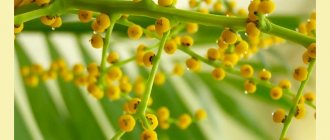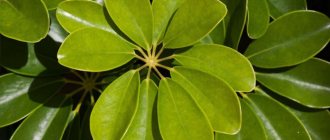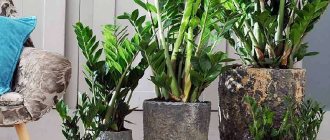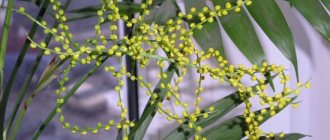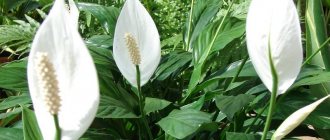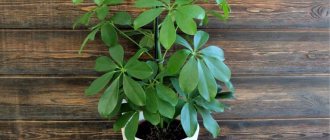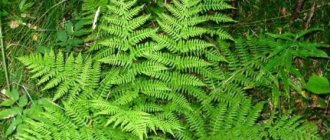Caring for an indoor Hamedorea flower should be special and correct. This is the only way your palm tree will grow beautiful.
House palms are a very popular and popular type of indoor plants. They are distinguished by their unusually beautiful appearance, which is not surprising, because they are exotic. One of the most beloved species of this plant among gardeners is Hamedorea .
It is noteworthy that this is not just a beautiful indoor flower. There are many beliefs and signs associated with this representative of the Palmovs. Therefore, it is not surprising that the interest of lovers of unusual home flora in the plant is growing. Read more below.
Where is the homeland of the domestic flowering Hamedorea palm tree: types, varieties, how it blooms, photos
Hamedorea blooms
Hamedorea is a perennial flowering plant native to the tropics. The flower is widespread in East Africa, Central America, and Madagascar . Also, several varieties of palm grow on the Crimean Peninsula, southern Europe and the Caucasus .
The characteristics of a flower directly depend on its variety. There are many varieties of this home flowering palm tree - indoor Hamedorea. Below you will find photos of some species and see how the plant blooms. The most popular types are:
Hamedorea graceful (elegans)
Hamedorea graceful (elegans):
- It is a perennial single-stemmed plant, growing up to 1.5-2 m in height .
- The trunk has a smooth surface and is covered, as a rule, with 6-7 pinnate leaves .
- Each of them is divided into 8-15 segments of a dark green hue, having a narrow lanceolate shape.
- The inflorescences are panicles, loose in texture, formed by cobs. The latter, in turn, consist of orange-red flowers.
- After the end of the flowering cycle, black berries appear in place of the flowers.
Hamedorea Ernest-August
Hamedorea Ernest-August:
- This type of flower has leaves that are dark green and not divided into segments.
- They look like large and wide plates, sometimes bifurcating at the tips.
- The plant does not have particularly vigorous growth. On the contrary, the pace of its development is slow.
- In general, this type of palm is characterized by a stem form. This means that one rhizome can produce only one stem.
- This culture blooms with red spherical flowers, which are collected in spreading inflorescences.
Hamedorea high
Hamedorea high:
- Already from the name you can roughly understand what the main features of this type of plant are.
- The stems of indoor culture are erect, similar in appearance to bamboo.
- When the leaves at the bottom fall off, and light ring-shaped spots appear instead.
- At the top of the stem there are 4-6 dark green pinnately dissected leaves.
- The narrow-lanceolate lobes are pointed at the edges.
- The plant blooms very beautifully, producing bright orange flowers that form panicles.
Hamedorea unicolor
Hamedorea unicolor:
- This is the most unpretentious type of indoor palm tree among all varieties. That is why it is often the choice of flower growers.
- The shoots of the plant grow slowly and rarely reach more than 100 cm in height.
- The form is characterized as bushy, which is facilitated by the formation of several thin additional shoots.
- At their tops there are leaves of a light green color and pinnately dissected shape.
- Hamedorea unicolor is distinguished by the rapid onset of the flowering period.
Hamedorea metallic
Hamedorea metallic:
- This type of palm tree has leaves that are dark green with a metallic tint. Due to this, this type of flower got its name.
- The leaves of the plant are solid and wide.
- As it develops, the palm trunk thickens and becomes woody.
- A palm tree growing in nature can reach 2 m in height , but in a flower pot where space is limited it will be smaller.
- The culture is characterized by good shade tolerance.
Hamedorea bridble
Hamedorea bridble:
- This representative of exotic indoor plants can grow up to one and a half meters. But it is noteworthy that this palm variety is a hybrid of the popular variety Elegance .
- However, the specimen in question has larger, brighter flowers, and the leaves and shoots are colored emerald.
- Proper care allows the plant to form a lush vegetation mass. It is characterized by an attractive appearance.
Of course, there are many more varieties of Hamedorea . About 120 species of this exotic plant are known But the most popular in home floriculture are the above-mentioned specimens.
Varieties of Hamedorea
Several types of Hamedorea are grown indoors.
Hamedorrhea Ernest-Augustus
Height more than 1 meter, flowers red. The leaves look a bit like a fish tail. Forms aerial roots.
Hamedorea graceful (elegans)
Height more than 1.5 meters. Flowers with an orange tint.
Hamedorea Metallica
Height up to 50 cm.
Hamedorea elegans variegata
Chamedorea variegata has white leaves. Like other variegated plants, it requires more light than its green relatives.
Hamedorea: signs and superstitions
There are many signs and superstitions regarding the presence of certain plants in the house. For example, there is a well-known superstition that you should not bring lilacs into your living space, as this promises death to someone close to you. But all this is nothing more than a stupid fiction, in no way confirmed by real facts.
What about the Hamedorea palm? Are there any signs here - good or bad? Of course yes. Here are a few of them:
- Hamedorea is a source of powerful energy, so its presence in a room or office has a beneficial effect on the overall microclimate.
- In the room where the flower grows, people are filled with energy and get rid of the feeling of depression.
- All undertakings and plans will come true for the person caring for the exotic plant.
- The situation in the family is improving, misunderstandings, disagreements and scandals are becoming a rarity.
- Energy vampires try to stay away from people in contact with Hamedorea
- It is contraindicated for selfish individuals to keep such a palm tree next to them, because they may completely lose sensitivity to the feelings of family and friends.
- If there is coziness, tranquility and harmony in the house, then light and lush foliage predominates on the flower. If the branches darken and begin to wither, this indicates the presence of evil spirits and evil energy. By giving away its vital energy, the palm tree tries to cleanse the aura in the house.
Today it is generally accepted that Hamedorea brings only goodness to its owner. Thus, a person who takes care of a flower becomes more self-confident, calm and reasonable. But everything, of course, depends on one more subtlety - vocation. Thus:
- For creative individuals, the palm tree promises recognition, fame and success.
- For businessmen, the flower helps realize commercial plans.
- For athletes who love to care for Hamedorrhea, the indoor plant helps them reach new heights.
However, there is a negative superstition. Our ancestors believed that Hamedorea in the house brings misfortune and trouble. To avoid them, you need to bring the palm tree into the house correctly. Or rather, not bring it in in a pot, but bring it in on wheels, so carts, strollers and other small vehicles were used to transport the plant.
It is up to you personally to believe the signs and superstitions associated with the exotic flower in question. People are now less inclined to follow the warnings that their ancestors trusted.
The benefits and harms of palm trees
This palm tree not only decorates the room with its luscious appearance, but also has a beneficial effect. The most important thing is that the plant is able to purify the air from pollution and harmful microorganisms and impurities (especially benzene, ammonia and formaldehyde). Chamedorea also increases air humidity.
The culture is completely safe and does not contain toxic substances. The palm tree does not harm either people or animals. In addition, astrologers claim that chamedorea can improve mood and fight depression. The best place to place it is in the living room or dining room.
Hamedorea plant: features of growing at home after purchase
Hamedorea plant
The Hamedorea plant is a flower that requires care. Provide it with optimal growing conditions - and it will please your eyes all year round. Study the features of growing a flower at home after purchase. The intensity of growth and development of culture depends on:
- Temperature indicator in the room
- Air humidity level
- Lighting
- Frequency and abundance of watering
- Substrate composition
- Added fertilisers, fertilizers
- Transplants
Do not forget that the flower needs shading, so place it away from intense light radiation. Also provide the flower with frequent watering. Avoid letting the soil dry out, otherwise the palm tree will simply die.
What does the plant look like?
Chamaedorea is a fairly numerous genus belonging to the Arecaceae or Palm family (Arecaceae, Palmae, Palmaceae). The name is a combination of two Greek words: chamai (dwarf) and dorea (gift). In old sources the name “neanta” is also found
Hamedorea is highly valued by adherents of Feng Shui, who recommend having such a flower in every office. It is believed that this plant is able to neutralize negative energy, extinguish conflicts, fight melancholy, apathy, absent-mindedness, depression and stress. The owner of the chamedorea becomes more cheerful and cheerful, and looks at life more optimistically.
Most of the currently known 130 species of chamedoreas are low tree-like or bush-like palms with several trunks. But there are also epiphytic plants and even lianas.
Hamedorrhea at home does not look as impressive as in nature, but it is also very worthy
Hamedorea is native to the foothills of humid South and Central American forests. Most often they are found in Mexico, Belize, and Guatemala. Due to the characteristics of its habitat and appearance, Hamedorea has the nicknames “mountain”, “reed”, “bamboo palm”. In the United States it is known as Palma bella, meaning “beautiful.”
Flower growers value the plant for its large leaves (length from 30 cm to 2 m), symmetrically dissected along the central vein into individual “feathers”. The vein may sag in the middle. The shape of the leaves resembles fans. They are located on thin long trunks, similar to the stems of reeds or bamboo. The maximum diameter of the trunk is no more than 3 cm. Characteristic are transverse rings that appear in place of the lower leaves, which gradually fall off. The leaves are either collected in a “bouquet” or resemble a “crown” located at the top of the trunk.
Hamedorea blooms successfully at home, and flowers can appear at any time of the year. Quite inconspicuous velvety small yellow or orangish flowers randomly dot the peduncle. They are very reminiscent of mimosa. Since flowering has no decorative value, it is better to cut off the peduncle even before the buds form, so that the plant does not waste its energy.
Hamedorea flowers are not very attractive; if the goal is not to get seeds, the flower stalks are cut off, not allowing the buds to bloom
Like any palm tree - whether in natural conditions or “in captivity” - Hamedorea cannot boast of a growth rate. In nature, 70–80-year-old plants reach a height of 5 m or a little more; at home, they rarely grow above 1–1.5 m. This is especially true for specimens grown from seeds. At home, chamedorea grows more readily in width than in height. At the same time, its lifespan is practically unlimited. She dies only if the grower does not pay due attention to her and neglects the requirements for living conditions.
Hamedorea is a dioecious plant. This means the presence of specimens with only female (pistillate) and only male (staminate) flowers. Seeds are set on the first ones only under the condition of simultaneous flowering. Artificial pollination is also possible. You can distinguish pistillate plants by the light aroma of their flowers, which is absent in staminate plants. Inflorescences with male flowers are more voluminous and more branched.
Hamedorea is not only beautiful, but also useful. It has been scientifically proven that this plant is one of the leaders in absorbing carbon dioxide and releasing oxygen. Palm tree purifies the air from formaldehyde, trichlorethylene, and benzene. Moreover, harmful impurities are absorbed by both leaves and roots.
When purchasing chamedorea in a store, look for single plants - groups of seedlings closely planted in one pot are usually short-lived
Hamedorea flower blooming
The Hamedorea flower begins to bloom in the 3rd year from the moment it is planted in a pot. And if several specimens are placed in one container at once, they will bloom alternately. The yellow flowers have a pleasant scent and their appearance resembles a mimosa.
Important: Experts advise removing flower stalks from young palm trees, since the palm tree spends a lot of vital energy on their formation and development. As a result, its overall growth slows down. If this happens, use fertilizing and fertilizers.
Botanical description and origin of Hamedorea
Hamedorea, or bamboo palm, is a monocotyledonous flowering plant widely distributed in South and Central America. Under natural conditions, it usually does not grow more than 2 m. Some varieties of low-growing shrubs, due to their unpretentiousness, are cultivated as indoor plants, turning a standard interior into a real oasis.
The trunk of the bush palm is thin, so several plants are grown in a pot. Thanks to this technique, the effect of palm thickets is achieved, since the long leaves (up to 40 cm) with wide segments have an openwork pinnate shape. The plant produces 2–3 new leaves per year. In indoor culture, the height of adult bushes is limited to 1 - 1.5 m.
Unlike leaves, flowers do not represent any decorative value. The palm tree blooms like a mimosa, and its flowering is not tied to a specific time of year. They can appear at any time.
Temperature regime of the Hamedorea flower when kept at home
It is very important to provide the Hamedorea flower with optimal temperature conditions in the room where it grows. When maintaining a house, the plant reacts very sharply to heat, so in summer the room should be regularly ventilated. This will be enough to ensure that the exotic flower does not die, but fully develops and grows.
As for the cold season, try to maintain the temperature in the room at +12 - +18 degrees . However, do not allow drafts or hypothermia, although the plant survives calmly even in critical conditions.
Spraying the Hamedorea plant
An equally important condition for flower growth is the level of humidity. Its optimal indicator is 50%. When growing a Hamedorea plant in a house or apartment, do not forget to spray it every day. To do this, use settled water or liquid that has previously been passed through a special filter. Ordinary tap water will not work, as it contains many hard impurities that can harm the palm tree.
Some gardeners note that daily spraying is not necessary. It is enough to carry out the procedure twice a week, and in winter even once every 7 days .
Caring for an indoor palm tree
When caring for indoor chamedorea, you need to take into account the conditions for its growth in nature - moisture, heat, so it is necessary to create a similar environment indoors. Care includes regular moderate watering, air humidification, fertilization, and pruning.
Watering, humidity
You need to water the palm tree taking into account the temperature and humidity of the environment and the time of year. If the air is dry and the room is hot, then water more often than at low temperatures. The main criterion for determining the watering rate is moist, but not wet, soil. In summer, water when the top layer of soil becomes dry; in winter, the soil should dry out by 3-4 cm.
Water for irrigation is used that has been settled and heated to room temperature. During the cold period, it is recommended to alternate the water - once pour it with water at room temperature, the next time with water at a temperature of about 30 ° C.
The required level of humidity is maintained by humidifying the air using a stationary humidifier and water containers placed nearby. Moisture enters the plant through the surface of the leaf, so the plant is sprayed daily, and the leaves are wiped off dust every two weeks. When it is at rest, spraying is not recommended.
Feeding
The first fertilizing after planting (transplanting) is carried out 3-5 months later, using complexes for decorative deciduous crops, special fertilizers for palm trees (for example, “Palma”). The frequency of application depends on the season - from spring to autumn, feed every 2-3 weeks, in winter - once a month. When foliar feeding, the concentration of the solution is reduced by 8-10 times.
Sometimes, in order to speed up the growth of green mass, fertilizing is carried out twice a week, but the following conditions are met:
- Duration of application - two months, best April, May;
- use the same fertilizer without changing the dosage;
- Reduce the recommended dosage by half.
Trimming
Sanitary pruning consists of removing dry, damaged leaves that are beginning to turn yellow. Yellowing of the lower leaves is a natural process. They need to be cut with a sharp instrument so that the capillaries do not become jammed; the cut must be treated with a 1.5-2% fungicide solution to prevent infection.
If you don’t like the shape of the crown, you can trim off unsuccessful or crookedly growing shoots and leaves. There is no need to fear for the condition of the plant - tissue regeneration occurs quickly. Also, the palm tree will not suffer if you cut off the inflorescences, which spoil the decorative appearance.
Hamedorea: lighting and watering
Hamedorea
a pot with a Hamedorea near a window facing east. This will be useful for the flower, and also beautiful for the overall interior of the room. The best lighting for this plant is sunlight, but not strong, not scorching, but a little in the morning.
Now about watering:
- In hot months, it is absolutely unacceptable to allow the soil in the pot to become too dry. Therefore, hydration of Hamedorea must be regular and plentiful.
- Water your home palm tree 2-3 times. at 7 days
- It all depends on how hot and dry the weather is. But also avoid overwatering, as it is harmful to the flower.
In winter, it is enough to water the crop only once a week . This will maintain the vitality of Hamedorea and prevent the roots from rotting.
Is Chamedorea blooming?
Yes but rarely. The flowers are yellow, a bit like mimosa. Some varieties have orange or red flowers.
FAQ
Why does chamedorea turn yellow and dry out?
This plant is very sensitive to air humidity. If it is dry, the leaves turn yellow and dry out. To increase moisture levels, mist your chamedorea once or twice a day. If the lower leaves turn yellow, it’s okay, this is a natural process of dying off of the green mass. Dried leaves can be carefully removed with scissors. Hamedorea also turns yellow due to overwatering. Water the plant as the soil dries out. Just in case, check for rotten roots: remove the plant from the pot, cut off the black slimy roots. Then replant in new soil and a well-washed pot.
Why does chamedorea not grow?
Perhaps it's due to insufficient lighting. This palm loves diffused light; it does not develop well in full shade. But in general, chamedorea grows slowly. Therefore, if the plant looks healthy: there are no yellow or dry leaves, then there is no cause for concern.
Why do chamedorea leaf tips dry out?
It's either dry air or drafts. Try to provide the plant with the necessary humidity. To do this, spray chamedorea twice a day. You can also place a humidifier near the palm tree. And, of course, do not keep the plant in a draft, especially in the cold season.
Why do the leaves lighten?
Hamedorrhea can change color due to direct sunlight, poor watering or lack of nutrients in the soil.
Pot and soil for indoor Hamedorea flower
Flower growers cannot say unequivocally about which pot to choose for planting Hamedorea. Some botanists believe that a palm flower should initially be planted in a large container. Other connoisseurs of exotic plants in the house note that the pot should be small, so a container with a slightly larger diameter than the previous one, but not too deep, is better suited. But you will still have to replant the palm tree as it grows, so select the container for it at your discretion.
Pay due attention to the composition of the soil for the growth of this plant. Ideally, it should consist of the following components:
- Sand
- Peat
- Special soil (leaf)
Take all components in equal proportions - 1 tsp . Consider the soil pH , which is ideally 5-6.5.
If you are planning to buy a ready-made substrate, then experts advise giving preference to “Palma”. Add a little sand to the soil, mix, put the mixture in a container - and you can start planting Hamedorea.
How to care after purchase
After you bring the plant into the house, it is better to quarantine it away from other flowers. This way you will protect the rest of the plants in the house if it turns out that the chamedorea had pests.
Daria Sumarokova
Florist with 8 years of experience
Ask a Question
If you are a beginner gardener, it is better to choose healthy plants for purchase. Check that the chamedorea does not have yellow leaves, dry tips or white bloom.
After two weeks, when the plant adapts to the microclimate of your apartment, it can be transplanted into new soil and pot.
Read more about transplanting and soil further in the article.
Feeding and fertilizing the houseplant Hamedorea
It is necessary to feed the houseplant Hamedorea during its active flowering phase. That is, the flower needs nutrients most of all in the summer. It is enough to use a universal fertilizer, for example Agricola . It should be used at intervals of 14-28 days. Be sure to dilute the fertilizer with water, since the concentrate is quite strong.
Worth knowing: In cold weather, when the dormant period begins, Hamedorea does not need to be fed.
How to propagate chamedorea
There are three ways to propagate a plant:
- Seeds,
- By dividing the bush,
- Radical shoots.
Growing by seeds
The peculiarity of the propagation of chamedorea by seeds is the long period of germination of seedlings, sometimes up to 6 months. To ensure good germination, when buying chamedorea seeds in a store, pay attention to the packaging date. They cannot be stored for long periods of time, which is why their germination rate decreases by about 10% every month.
1. Pre-soak the seeds for 5 days.
2. After 5 days, you need to carefully destroy the upper hard shell. This is done with a triangular small file. This operation accelerates the germination of seedlings.
3. Make drainage holes in disposable cups and pour the substrate 15 mm below the edge. The seeds are placed with the sawn part into the ground with light pressure. They are not covered with soil.
4. The top of the cup is covered with transparent polyethylene, ensuring 100% humidity.
When the first leaf reaches 2-4 cm in length, the seedlings are transplanted into suitable soil.
Reproduction by dividing the bush
If a lot of seeds were sown in a pot, then when they grow, they form a kind of palm bush. Reproduction by this method is carried out in May. To do this, the earthen lump is carefully destroyed. Plants are separated and planted in a substrate.
Reproduction by root shoots
Hamedorea reproduces well vegetatively - by basal shoots from the mother plant. The offspring are separated after they have formed roots. And then they are planted in a prepared container with soil.
Transplanting a Hamedorea plant
Transplanting the Hamedorea plant
Young specimens of the Hamedorea plant require annual replanting. At the same time, buy a larger pot each time, because the flower is constantly growing and developing. Therefore, it requires more space.
As for adult plants, they need to be replanted when the roots become visible through the hole in the bottom of the container. In such a case, carry out the procedure once every 4-5 years - this will be enough.
Remember: Adult Hamedorea does not tolerate planting well. Therefore, before you begin, remove the top layer of soil and replace it with a new substrate.
Reproduction
Like any flowering plant, chamedorea has three main methods of propagation: by seeds, suckers or “babies” and classical division of the bush.
Propagation by seeds
It is used extremely rarely in palm plants, since the survival rate and germination of seeds of this plant is very low. They are very capricious in terms of storage conditions and the shelf life, even under ideal conditions, is very short.
The procedure itself is performed as follows:
- Before planting, the seeds are soaked in water for 100-120 hours. It is recommended to add a few drops of complex fertilizer to the water.
- Place 2-3 seeds in small, pre-prepared and disinfected pots with a standard substrate for palm trees and add them a little; Covering with substrate may not be necessary.
- Each pot is covered with plastic film to create a “greenhouse effect”.
- Water once every 2-3 days, and ventilate once a day.
Shoots will appear no earlier than in 3-6 months. After that, the plastic covers are removed from the pots, but the plants are transferred to a common greenhouse, where they remain for another 2 months until they are ready to grow on their own.
Reproduction by offspring
The method is more common than the seed method. In this case, young palm trees are separated, as a rule, already at the spring stage of plant care, during the next planned replanting. At the same time, it is necessary to understand that separating the “baby” without a root area is impossible, since it will not be able to take root normally and, most likely, will die.
Hamedorea offspring
In addition, this plant has fairly developed aerial roots, often forming simultaneously with the shoots. In this case, a more successful option for reproduction simply cannot be found.
Reproduction by dividing the bush
Usually used in cases where several plants grew in large pots at once. It is carried out at the end of spring, during which the earthen lump is completely removed from the pot and the plant is completely freed from it.
Reproduction by dividing the bush
After which the large bush is divided into several more or less equal smaller ones, each of which is transplanted into its own container according to the standard scheme. It is advisable to treat the tool with an alcohol solution before cutting the roots.
Pruning a Hamedorea flower: when is the best time to do it?
Pruning a Hamedorea flower is not a necessary measure if the flower is growing well. When is the best time to do it? If large brown spots begin to appear on the surface of its leaves, then such green mass must be removed. Also, trim leaves back to living, healthy tissue if they turn yellow.
Perform pruning using sharp scissors. Pre-treat them with alcohol - this is a mandatory disinfection measure. Lubricate the cut areas with a fungicidal preparation to prevent infection from joining the “wounds”.
Transfer
Repot your chamedorea as needed when roots are already protruding from the drainage holes of the pot. The best time to transplant is spring.
But if the plant’s leaves turn yellow due to too much watering, then remove it from the pot and inspect the roots. If you find rotten ones, cut them off, first removing all the soil.
When cutting off rotten roots, take 1 cm of living, healthy tissue.
Then sprinkle the sections with crushed activated carbon and let dry for about 1 hour. Afterwards you can plant the chamedorea in new soil. Wash the pot first with a disinfectant.
Growing Hamedorea flower from seeds
Growing a Hamedorea flower from seeds
Hamedorea can be bought in a pot at any flower retail outlet. However, many gardeners prefer to grow palm trees from seeds, despite the fact that this is quite painstaking work. If you want to grow an exotic flower from scratch, then remember a few important rules.
Seed selection:
- Choose only the freshest and highest quality grains. Look at each of them carefully. There should be no signs of damage, rot or mold on the surface.
- If you take old grains, there is a risk that most of them will not germinate. Not surprising, since their germination rate decreases by 10% every year.
- For this reason, when purchasing a package of Hamedorea , carefully study the dates.
- The age of planting material should not exceed 10 months .
- If for some reason the date on the bag of seeds is not indicated, refuse to purchase them and look for another option.
Soak:
- Before planting in the soil, Hamedorea should be soaked in clean liquid for 5-6 days .
- Before doing this, lightly file the top layer of grains with a sharpening stone so that they absorb moisture better.
Planting in the soil:
- After soaking, you can proceed to picking the seeds into the prepared soil.
- Place the grains with the sawn parts down in separate cups intended for germinating seedlings.
- There is no need to sprinkle the planting material with soil; place the container with it in a greenhouse, as it is important to provide it with a greenhouse effect.
Do not forget to regularly ventilate and moisten the soil. You will see the first shoots in about 2 months. , if you sowed homemade seeds. When picking purchased grains, seedlings will appear within 6-8 months . When the leaf reaches a size of 4 cm , the grown sprouts can be moved to a permanent container.
Reproduction methods
The easiest way to propagate an elegant palm tree is by dividing the bush. To do this, during the next transplant, carefully separate one or more specimens and plant them in a separate pot. But this method is only suitable for those gardeners who already have a fairly mature flower in their house.
But step-by-step instructions on how to grow from seeds will help anyone get a miracle palm tree:
- Buy seeds.
- Soak them in warm water and leave the shell to swell for 5 days.
- Drain the water, remove the softened shell , and scarify the hard surface (carefully file it with a file or sandpaper).
- Pour soil into 100 ml disposable cups and water well.
- Press 1 seed into each glass, deepening it by 1 cm and without covering it with soil .
- Cover the containers with plastic wrap or place in a greenhouse.
- Ventilate daily.
- Moisten the soil when it dries.
- Germinate at a temperature of +27+32°C and bright, diffused lighting.
The first shoots may appear within 2 months, but sometimes you have to wait 6-8 months for them.
Tip #6. The seeds of the graceful palm quickly lose their viability, so it is advisable to sow them immediately after purchase.
Reproduction of Hamedorea by division
Reproduction of Hamedorea by division
You can also grow Hamedorea by division. This propagation option is good in the case when you already have a blooming palm flower in your apartment, but you want to have a few more specimens for yourself or for sale. How does this happen? More details:
- Perform the procedure in the spring months - from mid-March, April, May.
- Remove the palm bush from the container and lightly wash the earthen lump under a tap with running water.
- Divide the bush into several elements so that each of them retains a healthy, fully formed shoot (cutting) and developed roots.
- Place the resulting parts of the palm bush in different pots.
It is worth noting that flowers, when propagated by division, will need about a month to adapt, after which they will begin to actively grow.
How does chamedorea reproduce?
Palm trees can be propagated in several ways: seed germination, cuttings, air layering.
Germination of seeds
Nolina flower - home care
To propagate Hamedorea using this method, you must:
- Buy seeds.
- Place them in water and let them germinate for a week.
- Remove the top shell from them using sandpaper.
- Plant the seeds in small cups with fertilized soil and leave until spring.
Important! If the procedure is carried out in the autumn, the cups with shoots should be covered with plastic wrap.
Rooting cuttings
For reproduction you will need:
- In autumn, carefully inspect the palm tree.
- Carry out preventive spraying.
- Select strong and young cuttings and cut them.
- Place the shoots in water for several days, then plant them in soil fertilized with peat and send them to the basement or cellar.
In early spring, the plant can be planted in pots according to the standard scheme.
Propagation by cuttings
Air layering
To propagate a palm tree using this method you need:
- Examine the flower, select a straight and unbranched branch.
- Cut the bark along the ring.
- Place a plastic bag on the branch and secure it at the bottom with electrical tape.
- Pour fertilized soil into the bag and water it.
- Fertilize and water until March.
In early March, you will need to cut off the selected branch and transplant it into a separate pot.
Note! In some cases, the crop is propagated by bush division and root shoots. However, experts recommend giving preference to the cutting method.
Hamedorea plant - diseases and pests: why do the leaves dry out?
Hamedorea plant - leaves dry out.
Hamedorea acquires strong immunity and can withstand various phytopathologies. However, it will still not be possible to completely insure it against diseases, so you need to at least know what ailments the flower most often suffers from, or what external factors negatively affected it. What diseases and pests exist in the Hamedorea ? Why do the leaves dry out?
- If the ends of the leaves dry out , this indicates increased dryness of the air in the apartment. Ventilate the room more often and spray the palm tree.
- Yellowing of leaves occurs due to excess lighting or the use of hard, insufficiently filtered watering liquid. To improve the situation, move the flower to a darker room, and also use softened water for watering.
- Rotting, drooping or dying of leaves indicates rotting of the root system of the domestic palm tree. This usually happens in winter and is a consequence of overwatering the plant. To prevent Hamedorea from dying, water it less often in cold weather, and also do not forget to loosen the soil. If the situation reaches a critical point, you will have to transplant the flower into a new pot. Before doing this, do not forget to remove areas of rotten roots. Add drainage and water-retaining components - coal or sphagnum - to fresh soil.
- Brown spots on the leaves are another sign that the palm tree is overwatered or is using hard water to treat it. Trim damaged areas of green mass, reduce watering and henceforth use only softened and filtered water.
- Wilting and darkening of the leaves is observed when the bush is kept in low temperature conditions. Move the container with the green plant to a warmer room - and the situation will improve.
- The falling of the lower leaves is considered a normal process when the green mass begins to “age”. Such leaves must be cut off, and then treated with a fungicide at the cut points.
- Sometimes a cotton-like coating appears on the leaves of Hamedorea . It signals that the flower has been affected by a mealybug. Insecticides are used to eliminate phytopathology.
- This exotic flower is often attacked by spider mites and scale insects. To get rid of pests, treat the leaves with a special compound that can be bought at any flower shop.
Hamedorea is a plant that truly pleases with its greenery and adds positivity to life. It is distinguished by lush, amazing flowering, but it needs care and attention. But if you provide the flower with the proper growing conditions, it will not bring you much trouble, but will become a wonderful decoration for the interior of your home. Good luck!
Do you have Hamedorea growing at home? How do you look after her?
Pests and diseases
Hamedorea elegans practically does not get sick and is not attacked by pests. But there are a number of problems that gardeners may encounter in the process of growing palm trees:
| Problem | Cause | Treatment |
| The tips of the leaves or entire fragments of the plates dry out | Low air humidity | Increase humidity using any of the methods described above |
| The ends of the leaves turn brown | Excessive watering | Water less frequently and less abundantly, focusing on the condition of the soil in the pot |
| Light spots covering the surface of openwork foliage | Chlorosis caused by iron deficiency | Apply iron-containing fertilizers |
| Whitish coating on the underside of the foliage | Spider mite | Treat with insecticide twice with a break of 10-14 days between sprayings |
| Dry brown spots on the top of the leaf blades | Burn from direct sunlight | Shade or move to another place where the sun's rays will not hit the delicate greenery |
| Drooping, limp leaves or stems | Root rot caused by excess moisture | Remove the root ball from the pot, cut out the rotten fragments, sprinkle the sections with crushed coal , and transplant the plant into a fresh substrate. Water more carefully in future |
| The lower leaves gradually turn yellow and die | A natural process caused by flower aging | No treatment required |
In conclusion, I would like to note that the benefits and harms of chamedorea do not depend on the conditions of its cultivation. A tropical guest not only decorates the interior of a room or office. Its leaves, both in winter and summer, filter harmful substances and destroy dangerous chemical compounds floating in the air.
As a result of such cleaning, apartment residents feel much better , feeling a surge of strength. A plant with openwork leaves is absolutely harmless, so it can be placed in the family room, in the bedroom, and even in the nursery.
